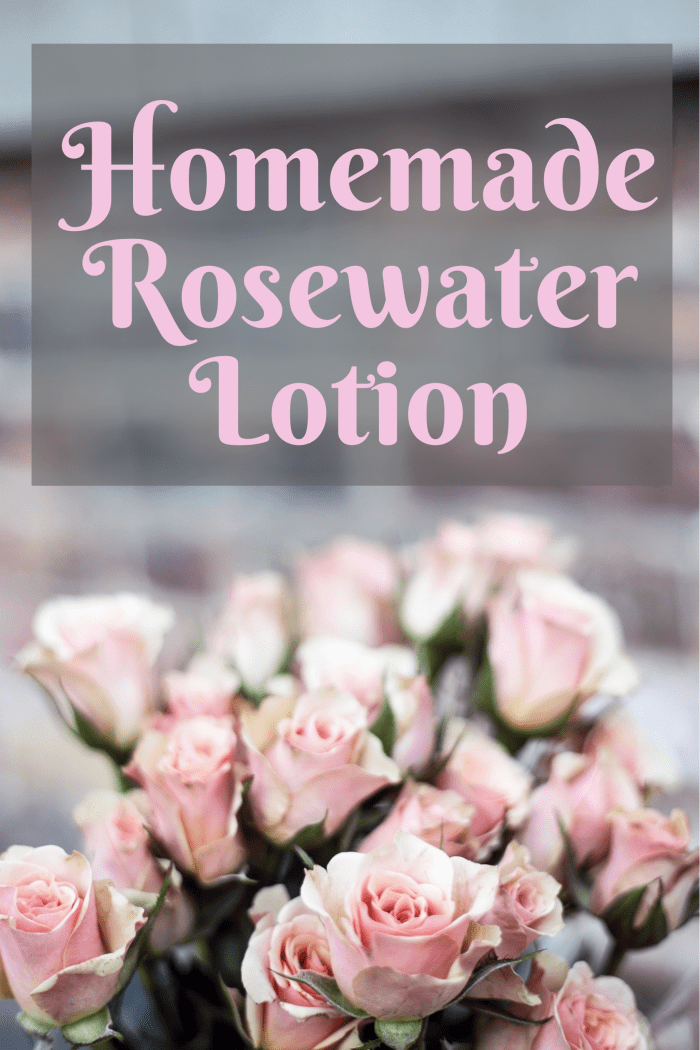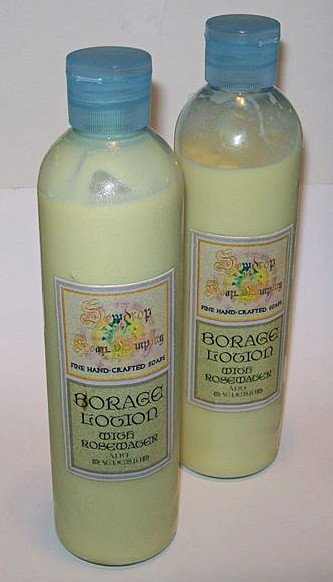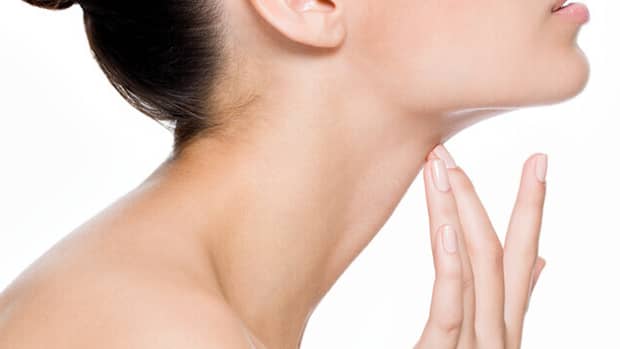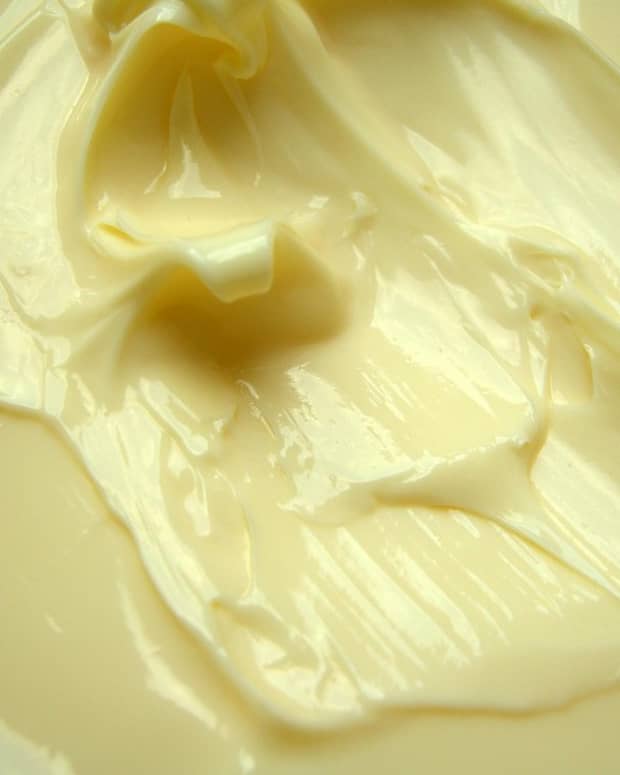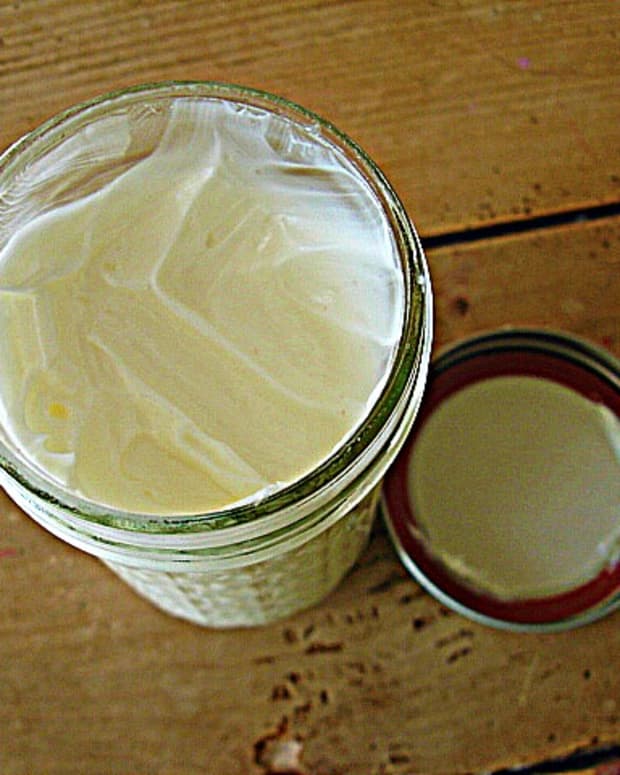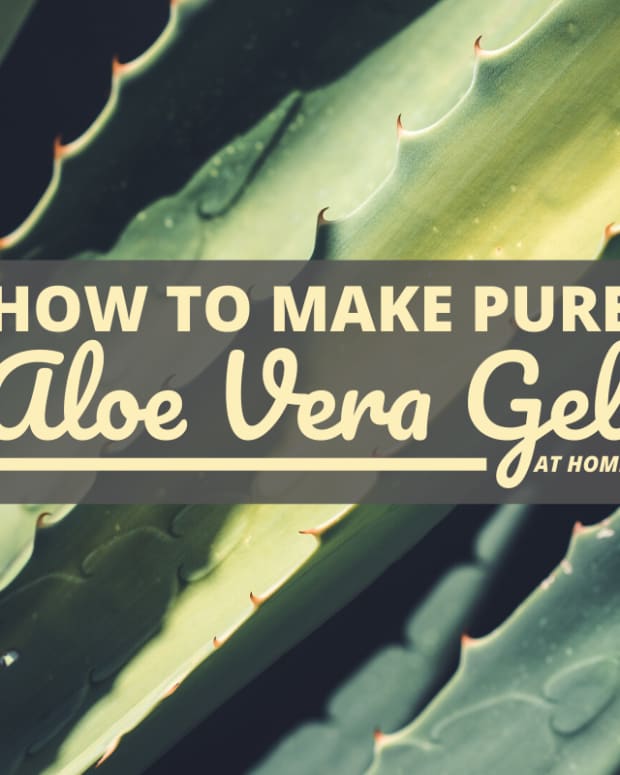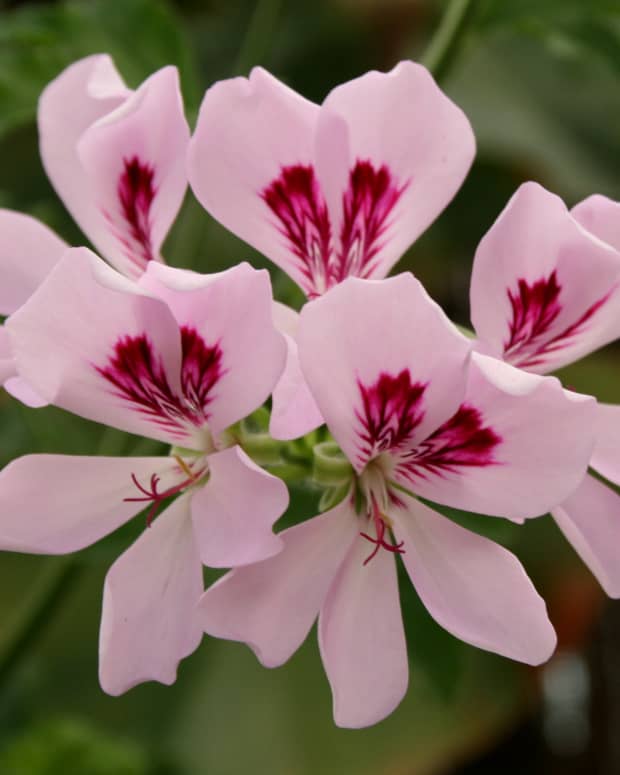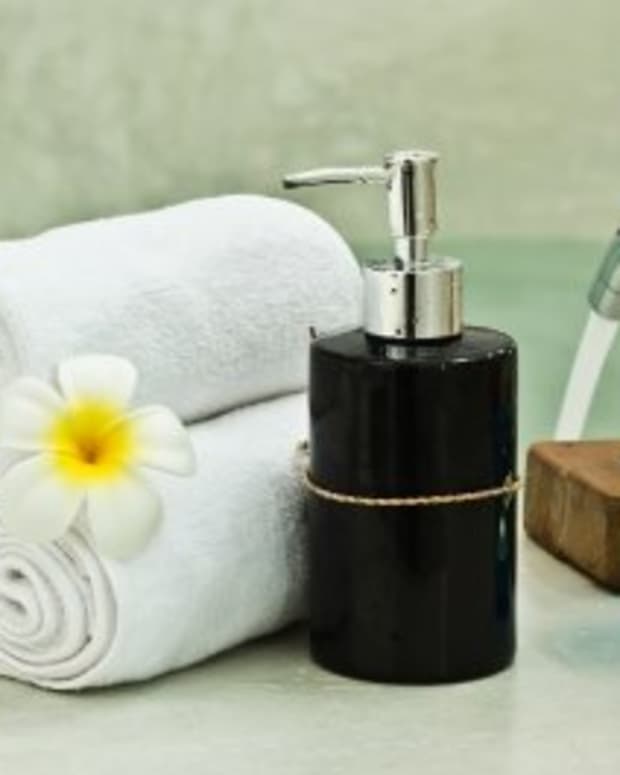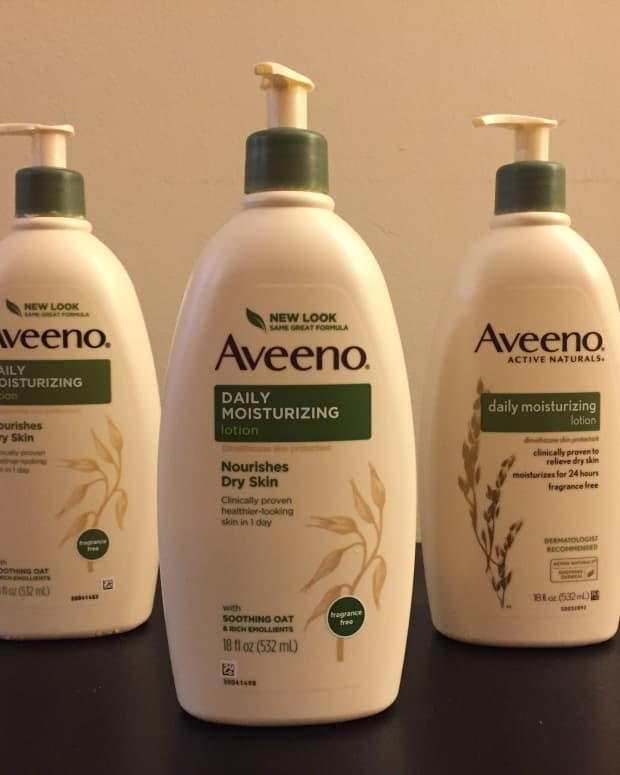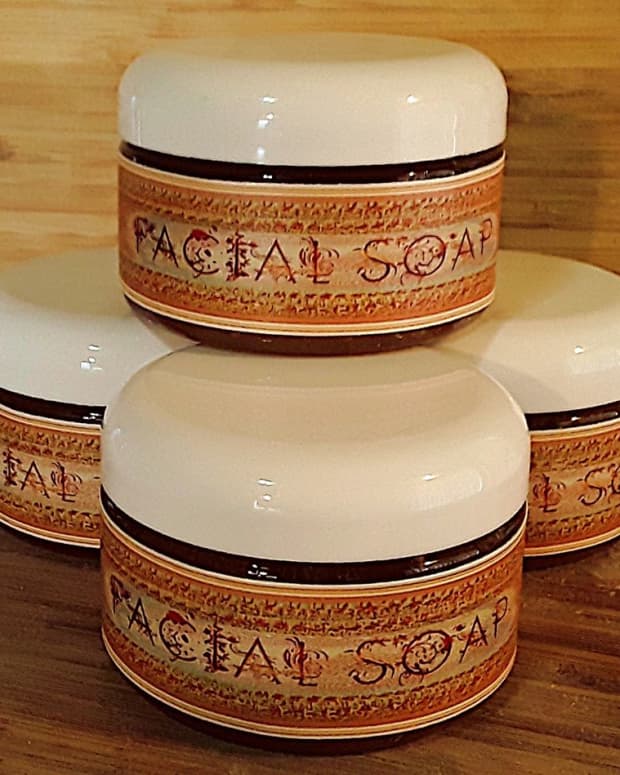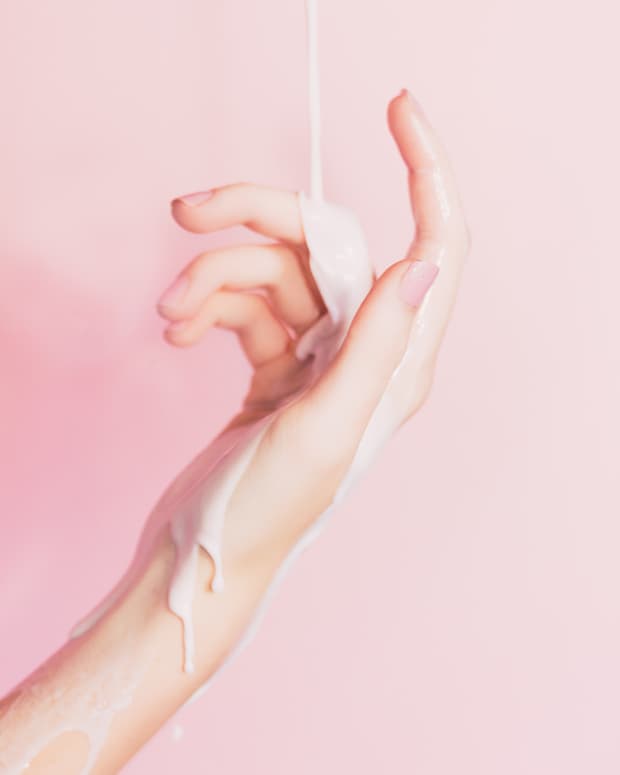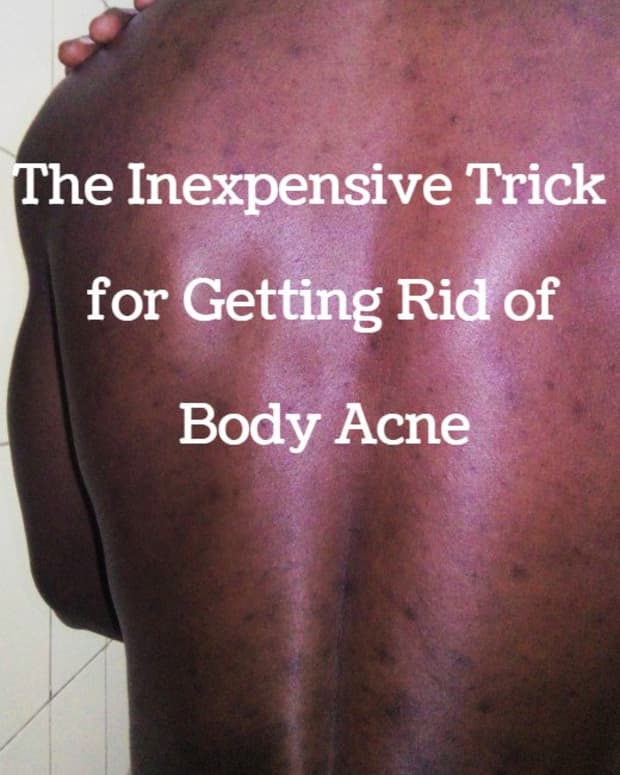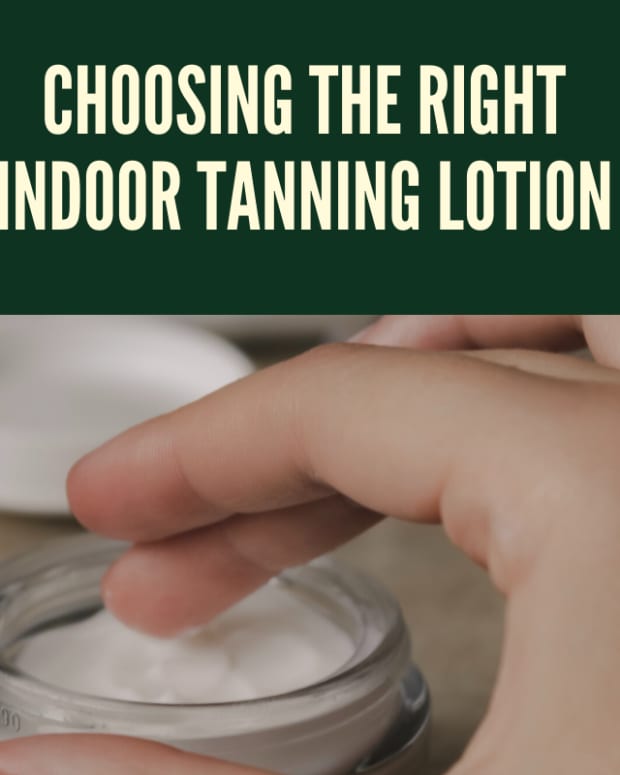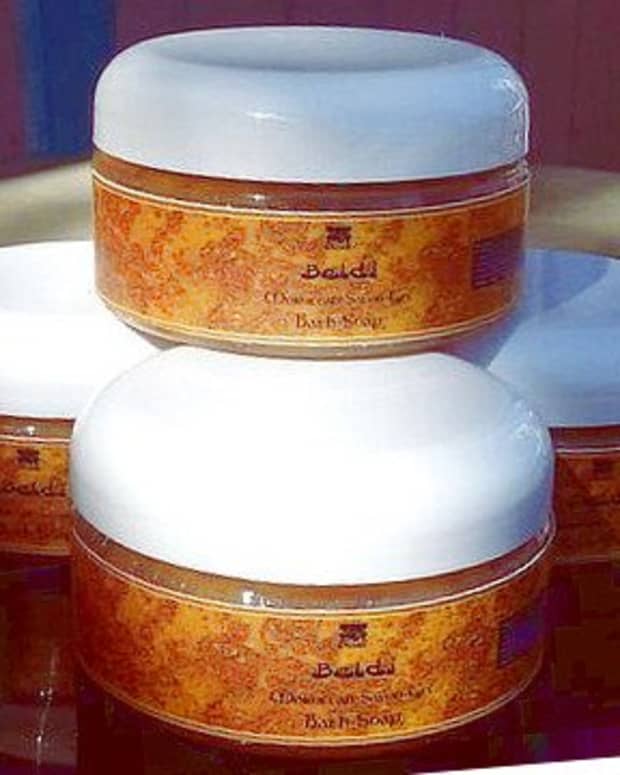The Ultimate Rosewater Lotion Recipe
Sharon has been making and selling soaps and personal care products for about five years.
My Fancy Borage and Rosewater Lotion Recipe
My plan in formulating this lotion recipe was to create the ultimate, dry-skin healing lotion for two of my daughters who suffer from dry, itchy skin, especially in winter. This lotion was planned for Christmas presents and was intended to be quite fancy—so it contains several rather expensive ingredients.
This lotion should be kept refrigerated, even though I have suggested using a preservative. The reason for this is the borage oil—perhaps the most beneficial ingredient—does not keep at room temperature.
Ingredients
Yield: Makes about 5 cups.
Oil Phase
- 2 oz coconut oil
- 2 oz avocado oil
- 2 oz cocoa butter
- 2 oz sunflower oil
- 1 oz flaxseed oil
- 1 oz borage oil, (I use Nordic Borage Oil)
- 1 oz jojoba oil
- 1 oz rosehip oil
- 1 oz glycerin
- 4 oz liquid lecithin
- 1.3 oz Polysorbate 80
Water Phase
- 8 oz distilled water
- 8 oz magnesium chloride
- 8 oz rosewater
Fragrance
- 0.3 oz palmarosa
- 0.5 oz ylang-ylang
Preservative
- 0.4 oz Optiphen ND
Instructions
- Bring distilled water to a boil. Remove from heat.
- Dissolve magnesium chloride crystals in water. Cool.
- Add rosewater.
- Melt coconut oil and cocoa butter. Allow to cool a little and add the other oils, along with glycerin, lecithin, and Polysorbate 80.
- Add the water phase to the oil phase gradually while blending using an immersion or stick blender.
- Mix until emulsified.
- Mix in fragrance and preservative, and blend well with a stick blender or an electric mixer.
The end result should be a pale-yellow creamy, opaque lotion. It can be poured into sterilized bottles, jars, or pump bottles, and will fill four to five 8 oz containers. Keep refrigerated (mainly to preserve the borage oil, which spoils easily).
Fancy Oils for Specific Skin Benfits
Maybe it's not the absolute ultimate since I felt I had to draw the line somewhere on the cost of ingredients, which, frankly, are pricey enough as is it. As with many of my other recipes, it can be used as a springboard. For example, this recipe contains one ounce each of "luxury" oils that I consider expensive: rose hip oil, jojoba oil, borage oil, and flaxseed oil. These luxury oils make up approximately 10% of the total recipe.
Many other luxury oils are sometimes even more expensive, and they may be substituted for specific skin needs. Like argan oil, tamanu oil, moringa oil, monoi oil, meadowfoam seed oil, black cumin seed oil, castor oil, hemp seed oil, and many others. If you are interested in making a customized lotion, which you can do by making substitutions to this recipe, you may want to have a look at the special benefits of each of the more high-end oils that will have the benefits you need for your skin.
Customize Your Lotion
Can you use as many fancy oils as you want? I don't see why not. Just bear in mind that if you add to the volume of oils in the recipe, you will also need to add to the volume of water or rosewater or other water-based liquid or hydrosol. (Obviously, substitutions can also be made to the water phase of this lotion.) Additional lecithin and Polysorbate 80 may also be needed if the total volume of the product is increased.
Benefits of the Oils I Use
- Borage oil: According to Summer Bee Meadow, borage oil "is one of the richest sources of gamma-linolenic acid [GLA]. Plus it contains important vitamins and minerals. It is often used in high-end cosmetic formulations to nourish and hydrate the skin. It is said to be beneficial for maturing skin and for damaged skin where regeneration of new skin cells is needed." Other sources say that GLA is the key to healing many skin problems. I chose a pretty darned expensive form of borage oil that was labeled 100% GLA.
- Rosehip oil: Rosehip oil is a natural source of vitamin E, beta-carotene, and the antioxidant lycopene. It is said to help scarring, sun-damage, and aging skin.
- Jojoba oil: Jojoba oil is very much like the natural sebum produced by human skin, so it is thought to help acne by dissolving the sebum that clogs pores. It is also anti-inflammatory, anti-bacterial, and is believed to help many skin conditions.
More Common Base Oils
Okay, base oils are rarely all that fancy.
Read More From Bellatory
- Sunflower oil: You can purchase sunflower oil from Wal-Mart. It is a very inexpensive oil, but I selected it because of its high percentage of skin-loving linoleic acid. I used the Wal-Mart oil because sunflower oil from health-food stores are almost invariably the high-oleic kind, which is better for cooking, but not as good for skin, as it has a far lower percentage of linoleic acid.
- Cocoa butter: Cocoa butter is is an excellent protective moisturizer that also contains antioxidants. (Shea butter or mango butter could also be substituted.) My cocoa butter comes from Soaper's Choice, but cocoa butter is available in one-ounce tubes at most dollar stores.
- Avocado oil: Avocado oil is high in vitamins A, D, and E, and is often used for cosmetics because of its moisturizing properties. I like to use organic avocado oil.
- Coconut oil: Coconut oil is an all-around good base oil. It acts as a thickener, and many people enjoy moisturizing their skin with plain coconut oil. I used organic coconut oil, partly because I was going all-out on this lotion, and partly because I really prefer the fragrance and texture of organic coconut oil.
Coconut oil does not agree with everyone's skin. People who are allergic to nuts are likely allergic to coconut oil, plus coconut oil is said to be comedogenic, which means it may contribute to acne. My impression of research done to determine which oils are comedogenic is that it sounds pretty bogus. However, real-world people do seem to find that coconut oil can cause acne.
Substitutions
If coconut oil doesn't work well for you, you may want to substitute another oil for the coconut oil in this recipe, especially if you would like to use this lotion as a facial moisturizer or face cream. Some oils that would make good substitutes are:
- Sweet almond oil
- Olive oil
- Grapeseed oil
- Apricot kernel oil
You could simply increase the avocado oil in the recipe. If you use these liquid oils, the lotion will not be as thick, but you might be able to remedy this by adding more cocoa butter, or by substituting equal parts liquid oil and mango butter for the coconut oil.
Why Use Magnesium Chloride?
Magnesium is really good for you. It is involved in more than 300 enzymatic processes in the body, and most Americans are deficient in it. In the form of magnesium chloride (used in this recipe), it is readily absorbed through the skin. In fact, some claim that the body can utilize magnesium much more efficiently when absorbed through the skin. Many sources indicate that magnesium deficiency may play a role in problems with dry skin and eczema, and magnesium supplementation (along with supplementation with omega-3 fatty acids in flaxseed and fish oil, and gamma-lineoleic acid, or GLA, found in borage oil, evening primrose oil, and black currant oil) is often suggested to help these problems.
Magnesium is also excellent for soothing muscle cramping and sore muscles, which is why Epsom Salts (magnesium sulfate) are a popular treatment for this. Magnesium is good for nerves, bone health, and skin health. Including magnesium chloride also makes this lotion useful as a rub for sore or cramping muscles.
Nevertheless, this will still be a great lotion without magnesium chloride. Leave this out if you prefer.
Fragrance
I chose the essential oils Ylang-Ylang and Palmarosa because they are very good for your skin. Many essential oils have skin benefits. There is a link at the bottom showing the skin benefits of several other essential oils.
Some Thoughts About Emulsions and Lotion Making
Lotions that are mixtures of oil and water are emulsions, and they are held together by an emulsifier—in this case, liquid lecithin and Polysorbate 80. This recipe makes a stable emulsion. But emulsions are in many ways mysterious, and they can sometimes be troublesome. One thing that can be troublesome about them is getting them to stay emulsified, or keep them from separating. However, how prone they are to spoilage is usually the biggest concern.
Tips About Emulsions
Always use distilled water in lotions. Tap water has a lot of bacteria in it, and lotions that include water are natural breeding grounds for bacteria.
Use a preservative like the one I have used in this recipe. I used Optiphen ND.
If You Plan to Sell Your Lotions
Always use a preservative. You also need to prepare your product in a scrupulously clean environment in which your utensils and work surfaces are sterile. This is fairly simple. It just means washing containers and utensils, and wiping down work surfaces, with a Chlorox solution of one part bleach to five parts water, and using only glass or metal utensils. (Plastic can harbor bacteria.)
Don't forget to give the business end of your stick blender the same treatment. One source suggests turning the stick blender on high in hot, soapy water with bleach, to make sure that the nooks and crannies of the moving parts are thoroughly clean.
Some people skip using a preservative if they make lotions for personal use in small batches. Make sure to keep them refrigerated, and use them within two weeks. A key thing to remember about lotions is that they grow bacteria easily and rapidly. Bacteria can be present in a lotion in horrendous numbers and still be undetectable to the naked eye. In other words, it goes bad way before it looks or smells like it's gone bad.
Sterilizing
Professionals suggest that you heat the water phase of your lotion to 167ºF (75ºC) and hold at that temperature for 20 minutes, to kill bacteria. The oil phase should be heated to the same temperature but don't need to be held at that temperature.
I, along with many other lotion-makers, disagree with heating oils any more than necessary to melt them. I would suggest not heating most soft oils at all. That is, I would suggest not heating the sunflower, avocado, rosehip, jojoba, and especially the borage and flaxseed oils. Heating will cause these delicate oils to go rancid more quickly. My procedure is to melt the hard oils, let them cool slightly, and then add the soft oils.
Ways to Blend the Lotion
If at all possible, use a stick blender or immersion blender to mix emulsions. A lotion needs high shear to get the particle size as small as possible for a more stable emulsion. High shear is possible with a stick blender, but not by an electric mixer. I have used electric mixers to make stable lotions successfully, but you should use a stick blender.
Water and oils emulsify best if they are about the same temperature when blended together.
There is no need to get OCD about mixing emulsions. Some people just put all the ingredients (except heat-sensitive ones like the fragrance and preservative) in a saucepan or microwave-safe container and heat until the hard oils are melted. (If you are using magnesium chloride, you must dissolve it first, before adding to the pot.) Then stick blend until emulsified. If the mixture is very warm, let it cool to at least lukewarm before adding the fragrance and preservative. Mix these in thoroughly.
My actual preference is to melt only the hard oils (in this recipe the cocoa butter and coconut oil), and then add the liquid oils, which I always keep refrigerated. Because they are refrigerated, the oils (and water phase) may need to be warmed back up a little before emulsifying, to avoid having the hard oils re-solidify. I think it's best not to expose the more delicate oils to heat.
My Observations
Everything I've said above is known stuff. What I'm going to talk about next are my observations, which may or may not be true.
I find that oils and water emulsify best around room temperature, or at least no warmer than lukewarm.
You can only create a successful emulsion if the water phase is at least equal in volume to the oil phase. Sometimes an emulsion can separate because there isn't enough of the water phase in it.
Figuring Out Proportions
Some emulsions can be made with equal parts oil phase and water phase, but for reasons that are a mystery to me, some, as in the example formula from Brambleberry below, seem to require a lot more volume of the water phase than the oil phase. (I am speaking here of emulsions made using liquid lecithin as an emulsifier. I don't know if you can generalize my experience with lecithin to other emulsifiers.)
My experience is that it takes two tablespoons of liquid lecithin to emulsify one cup of finished lotion, but I have the impression from other sources that you may not really need that much. In the past, I have made lotions that stayed emulsified using lecithin alone, but I found that this recipe would not. Using a co-emulsifier was necessary. Polysorbate 80 works well with lecithin as a co-emulsifier. The recommended usage rate (per Brambleberry) is 1–5%. In this recipe, I used about 3%. When combined with the lecithin, this produced a stable lotion type emulsion—a pourable lotion that could be used in either regular or pump bottles.
Brambleberry's Formula
Here are Brambleberry's guidelines on proportions of ingredients for creating your own lotion, using emulsifying wax as an emulsifier.
- 70–80% distilled water
- 3–5% stearic acid
- 3–6% emulsifying wax
- Add the rest of your choice of oils or butters
To this add:
- 0.5–1% preservative
- 0.5% fragrance
So How Well Does This Lotion Work?
My feeling about this lotion is that it is the bomb! It makes my skin feel silky. I use it mostly on my hands, feet, face, shoulders (which are prone to developing a mysterious rash), and elbows. The rash on my shoulders is completely gone for the first time in years. (Other types of applications have helped but did not get rid of it completely.)
The downside, because of the magnesium chloride (a salt) the lotion stings when applied to skin that is broken, raw, or the least bit abraded. For me, it stings when applied to my face. My daughter's hands are very prone to dryness, and she complained that the lotion stings her hands. This is because it is like applying a salt solution to broken or abraded skin. It does no harm, and there are claims that the magnesium is beneficial, but not everyone will appreciate this.
My daughter tells me that using this lotion has cured the dry, itchy skin on her legs. I have hopes it will eventually soften her hands too—though I suspect she would use it more often if it didn't sting—so I'll be making a magnesium chloride-free version of this lotion for her.
One other thing I should mention: My daughter is also taking a dietary supplement that includes borage oil, fish oil, and flaxseed oil. (You can get this supplement at Wal-Mart.) For my own part, I've been taking the borage oil internally, along with flaxseed oil. If you really want soft, moist, glowing skin, it would be good to also take these key fatty acids as a dietary supplement.
Resources
- Brambleberry's Formula for Lotion Making
- Essential Oil Skin Care Chart
This essential oil skin care chart allows one to check which oils are effective for acne, dry or oily skin, wrinkles, and even stretch marks!
This content is accurate and true to the best of the author’s knowledge and is not meant to substitute for formal and individualized advice from a qualified professional.
Comments
Sharon Vile (author) from Odessa, MO on October 23, 2018:
Almost all suppliers give recommended usage rates for preservatives, as well as all other additives. The maximum usage rate for Liquid Germall Plus (which is what is normally used) is one-half of one percent. To find the amount you should use, multiply the total weight of your product by 0.005.
If you look at your supplier's product description, you will see recommended (and maximum) usage rates for almost everything.
For example, the recommended usage rate for Honequat (Hydroxypropyltrimonium Honey) is 2%-5%. The recommended usage rate for DL-Panthenol is 1%-5%.
When formulating your own products for specific needs, always check recommended usage rates.
For example, I recently decided to "beef up" my body butter recipe for a daughter whose hands get very dry in winter. I added the urea at the maximum usage rate of 40%, allantoin at 2%; myrrh essential oil at 5%; and three botanical extracts at a maximum usage rate of 0.5%.
My usual go-to for checking usage rates is lotioncrafter.com.
ISABELA DIMASUAY on October 21, 2018:
Hello thanks for your info. Im just barely started making my own lotion because of the dryness of my skin, im just confused about the percentage of the preservatives like optiphen hiw much the ratio used i used. Thank you.
Sharon Vile (author) from Odessa, MO on December 26, 2015:
Many soapmakers feel that soap can be made that helps acne, by including additives like activated charcoal, sea salt, tea tree oil, etc. I do think these can help, but the real deal is to stop using soap on your face altogether, especially with European-style facials (which can be DIY).
Susan Ream from Michigan on December 26, 2015:
Thank you blueheron, I appreciate the extra time you took to answer mu question. I'll go look at your article on acne. Blessings!!
Sharon Vile (author) from Odessa, MO on December 24, 2015:
This lotion was formulated with dry and sensitive skin in mind--and in hopes of helping eczema-prone skin. For acne, see https://hubpages.com/style/Cure-Acne-Have-Beautifu... This article tells how to clear up acne.
People with acne, in my opinion (and experience), should not use soap on their faces, but cleanse the skin either with a oil-and-water based lotion or with oil alone. Google "oil cleansing" for information about this. The residue of lotion or oil should be removed with diluted apple cider vinegar--not alcohol-based toners.
The article on acne has a somewhat simpler recipe for a cleansing lotion to use with acne. That cleansing lotion could be made with many different oils or combinations of oils. There are several essential oils that are said the benefit acne-prone skin. Here is a link on using essential oils for skin care: http://www.experience-essential-oils.com/essential...
Susan Ream from Michigan on December 24, 2015:
blueheron, When you say problem skin does that include acne?
Sharon Vile (author) from Odessa, MO on December 22, 2015:
I've made simple lotions in the past, just for personal and family use. In my case soapmaking opened up a world of information for me, through the many soapmakers' groups and forums. I began to think I might have picked up enough knowledge to make something quite special. And to tell you the truth, I had a long conversation with a woman whose knowledge of skin-care solutions was amazing, while shopping for ingredients at the health-food store. She told me that one of the key things for problem skin is GLAs, found in borage oil, evening primrose oil, or black currant oil.
Sharon Vile (author) from Odessa, MO on December 22, 2015:
Thanks for your interest! My daughter who is especially bothered by dry skin in winter is trying this lotion, and I'm excited to hear whether it helps. I personally think she should take borage oil internally, as well as using the lotion externally. I may have to buy her a bottle!
Susan Ream from Michigan on December 22, 2015:
This hub is very well laid out and so enticing. I love that you know the health benefit's of these oils too. I've made my own simple body butter using coconut oil, cocoa butter and lavender. Now I want to try this one.
Thanks for sharing!
Merry Christmas!!
Mekenzie
RTalloni on December 22, 2015:
Thanks for this interest and useful information. I've had difficulty using coconut oil topically and found this helpful. This is also a great springboard for me on borage oil.

